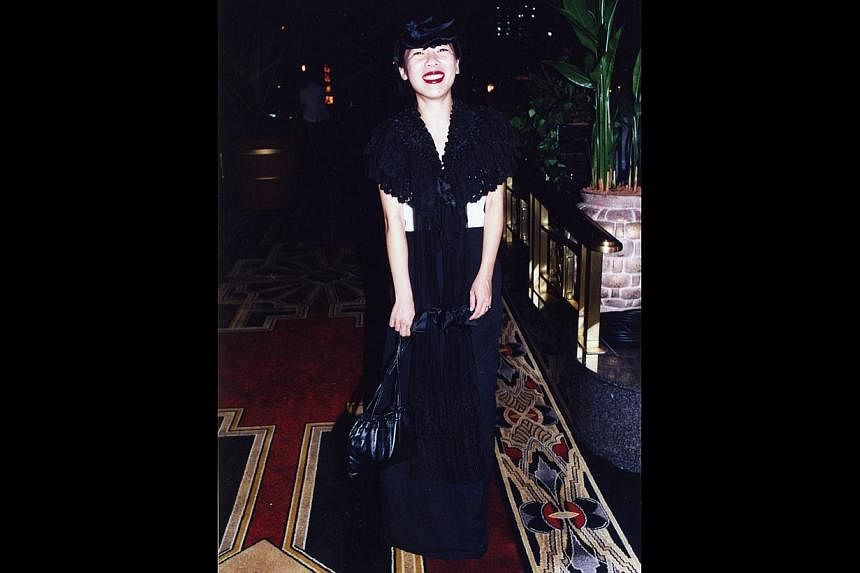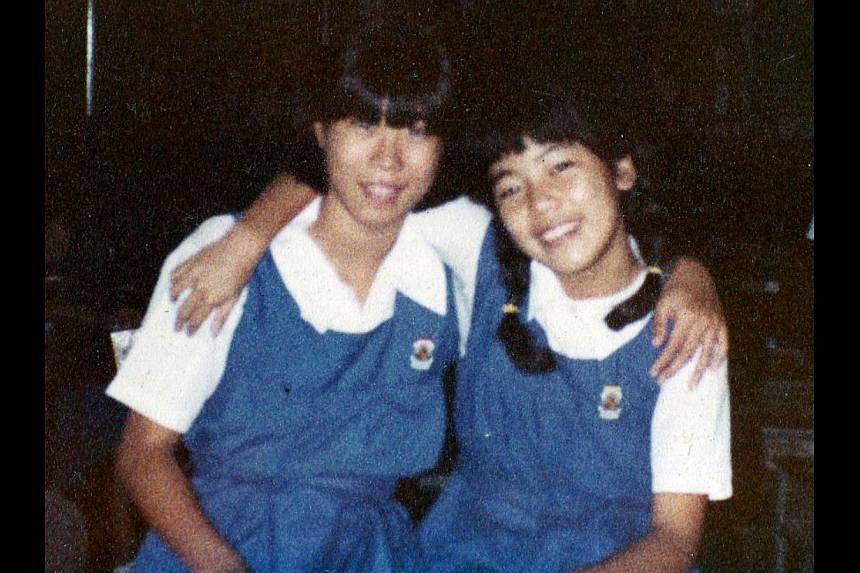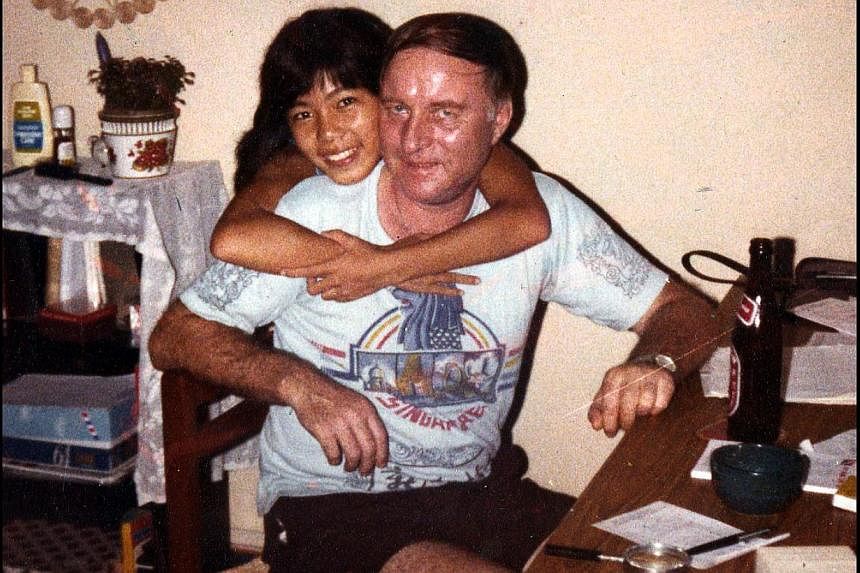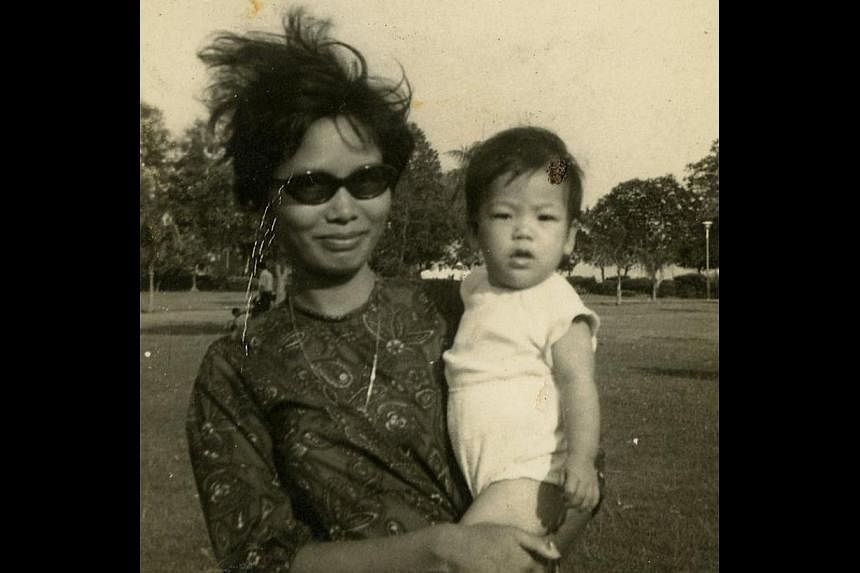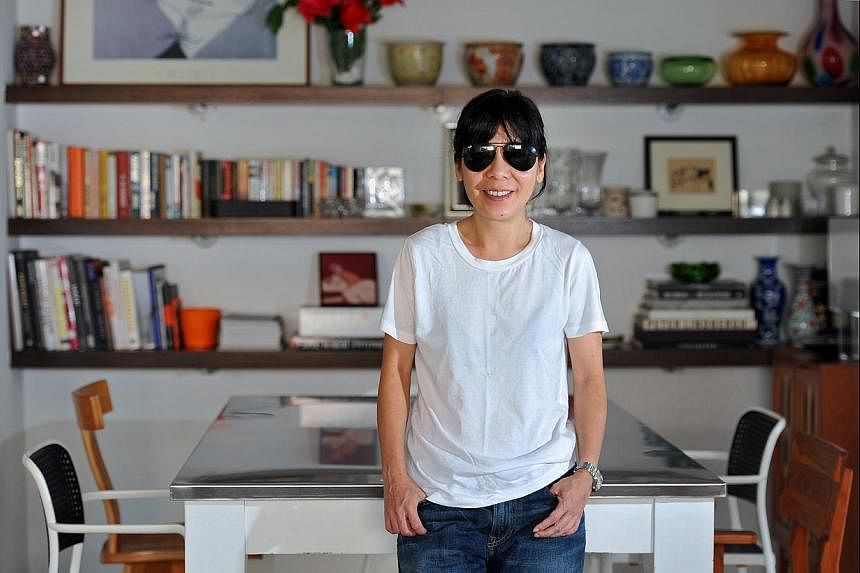Sleek racks of mostly black designer wear line her all-white bedroom at home, but fashion stylist Jeanette Ejlersen's everyday "uniform" consists of a bargain-brand white T-shirt, loose denim jeans and flip-flops.
When asked about the contrast between her wardrobe, which displays prized possessions such as a Helmut Lang suit and a fluffy feather boa from Escada, and her daily wear, the creative editor of fashion magazine Female, who turns 48 in October, laughs.
She says: "If you go on the Internet now, you'll see two lots of people: fashionable people who are being photographed a lot and fashion editors who always wear the same thing. You know why? Because their energy is spent creating things."
Female magazine, part of the SPH Magazines stable, celebrates its 40th anniversary this year. Ejlersen took over the reins with the January 2010 issue, after more than 10 years as fashion and beauty director of Her World.
Female boasts a six-figure readership of 102,000 based on last year's and the most recent Nielsen Media Index. It also won a gold for being the top women's fashion magazine in industry publication Marketing Magazine's annual awards.
Readers such as Ms Grace Ban, managing director of Estee Lauder Cosmetics, attribute it to the Ejlersen effect. "This is really her calling," says
Ms Ban, who is in her 50s. "Female is edgy and that's kind of Jeanette. She's opinionated, alternative, she has a strong point of view on designers and her own style. She's passionate, she cares about the little details."
On set, Ejlersen is low-key but everywhere, slipping in and out of flip-flops so as not to dirty the set-up and even getting on her hands and knees to adjust things if need be. Every detail is attended to. As the model has her eyelashes artfully curled and two men glue hair extensions onto papier-mache horns, Ejlersen looks at the props and comments that the fruit bowl needs apples that are a darker red. "Washington apples," she tells her assistant.
The stylist is considered "part of the fabric of fashion journalism", Ms Ban says.
Ejlersen has been in the business since the age of 18, cutting her teeth on the now-retired Go Magazine. She spotted modelling potential in a young Zoe Tay in the 1980s and styled rising stars Fann Wong and the late Bonnie Hicks.
She moved to Her World at the age of 30. Apart from being its fashion and beauty director, she helped to create high-society Chinese magazine Icon and revamped other titles such as Simply Her and the now-defunct Citabella.
Industry insiders call her the "Anna Wintour" of Singapore, in part because she long sported a bob reminiscent of American Vogue's editor-in-chief, and is never photographed without her trademark giant shades.
"It's not an Anna Wintour thing, I'm just shy," she says, curling up in a chair at her HDB flat in Bishan, remodelled into a large open-plan living room, kitchen and study, with three bedrooms attached. Summer-themed music from Internet music channel Spotify whispers in the background.
Her space is comfortably minimalist, the walls painted white and the living space furnished with a few bookshelves, family pictures and pieces of art gifted by friends. Her roommates include her mother, Madam Yam Soh Lui, a domestic helper and a couple of rescued puppies in need of a good home.
She has no children and is divorced - her former husband is editor David Fuhrmann-Lim, who built online fashion and gizmo blog Basketcase.Asia. They still work together, recently on Female magazine's 40th anniversary issue in April.
She declines to talk about her private life. "I'm really, really private. I feel whatever I want to say is in the magazines, and that's a lot because I go through every word, every dot, every comma.
"I talk a lot at work. When I'm not at work, I don't want to talk."
Questions about her family slowly draw her out, especially the photographs of her late stepfather Karl Aage Ejlersen. She long ago lost touch with her biological father and was about eight when the Danish ship captain married her mother.
She smiles through tears while recalling family holidays in Europe and long conversations at home in Singapore. "He never talked down to me. He called me his 'little pea'," she says of her stepfather, whom she loved dearly.
Before that, her mother supported her three daughters operating a boat that sold produce to ships. There were chickens in the backyard to supplement their diet. "She worked from 6am to midnight. I wouldn't say we were poor, I wouldn't say we were upper class either."
Clothes were mostly hand-me-downs from her older sisters Sabrina and Josephine, and she cared little for her appearance right through primary school at the Convent of Our Lady of Good Counsel in Cooling Close and secondary school at St Joseph's Convent.
In contrast, her older sister Josephine was very into fashion and, in the late 1980s and 1990s, designed for local brand Rest & Relax, with her then-husband. Now 49, she works in retail and marketing for ST Logistics' military supplies store Lifestyle Mart. She recalls her younger sister in the early days was to be found "mostly on a skateboard" and in T-shirts and shorts.
Then Ejlersen became a teenager and discovered punk fashion. A willing model for student hairdressers at Reds Hairdressing, she changed her hair colour regularly and even tried a mohawk.
Josephine recalls one failed experiment: "Green colour, or was it blonde?"
Ejlersen did badly in her O levels and after a gap year, worked for eight months as a clerk at British aeronautics firm HeliOrient. In one of her older sisters' fashion magazines, she saw an article about the life of an intern, decided it sounded "fun" and wrote in to Ms Betty Khoo, then editor of the firm which published Her World and Go magazines.
It landed her an internship at Go and in her first week, she interviewed celebrity hairstylist David Gan and styled her first magazine shoot.
"The subsequent week I was asked to style covers. There was no one else to do it. I was basically lugging clothes all the time, taking public transport, the bus, or if I'm carrying too many things, a taxi."
After two years as an intern, then writer and now publishing veteran Michael Chiang came in as editor of Go and gave her a permanent job. She stayed at the magazine as a fashion and beauty writer until she was 30, apart from going freelance during her third and fourth year there.
While many of her colleagues preferred writing articles to thinking visually, Ejlersen found images were her metier. "I can write because I'm a quick learner and I can appreciate good writing. I like to tell stories, but I love to tell stories in this way."
She dismisses the question of whether the fashion industry supports unhealthy portrayals of women. "My idea is not to sell skinny girls, my job is to sell ideas. If you have low self-esteem, hang out with people who make you feel better.
"I can't answer for other people but my job is not to be a moral barometer. We sell fashion and design. We're not your grandmother or your nanny. We're here to entertain."
At the start, she soaked up advice and lessons from people such as Chiang - "don't waste 'real estate' in magazines or newspapers being nasty or b****y about people" - and influential photographer Pat Chan, who taught her to use Polaroids to check poses and lighting before the real shoot began.
"Nobody wanted to style. Actually, the word wasn't used then. It's not just putting clothes together, it's about creating an image. To me, a stylist is no different from a person who paints or an architect. You're basically selling an idea.
"It was good being thrown in at the deep end because I could explore a lot. Even then I didn't sell trends, I sold ideas."
So she might have models such as Tay try to climb a tree - "She was very gung-ho. She would do it or die trying" - and when local scenes became too boring for her, she sought sponsors for overseas shoots.
"We shot in Mexico, Maldives before it became popular, Mauritius, Manila," she reels off a list of names.
There were a few hiccups. She styled a swimsuit spread in Morocco, not realising it was the fasting period of Ramadan. Onlookers threw stones or tried to turn over their van.
In Manila, though she had a letter of invitation from the Philippine government and was using an official car, local police held up the shoot, demanding a bribe. "I refused to pay. I said: 'Arrest us'. He drove us to a back alley and I just sat there until he gave up."
Not one to back down from a fight, she admits that she has a bit of a reputation on set. "I've sent hairstylists and make-up artists away. When I work on a job or shoot, I need collaborators. I don't like to tell people what to do. I like to tell them what the idea is."
It is not always her way or the highway. She rewards those who give their all with her best as well.
The late model Hicks said in her 1990 memoir, Excuse Me, Are You A Model? that Ejlersen's "bubbly personality made me feel at ease at once" in her maiden shoot.
Architect Colin Seah, 42, of award-winning firm Ministry Of Design, dabbled in fashion photography during his 20s and has only praise for Ejlersen's personality.
"She's one of the most warm and real people. I use that word as a high compliment because, especially in this world of creativity and high fashion, it's hard to tell who's real and who's not."
Ejlersen calls him her "adopted son", feeds him and his family home-cooked seafood and pasta, and his wife Joy is one of many friends who are offered long-term loans from her collection of couture.
Her favourite labels are not confined to overseas brands such as Balenciaga or Celine. She also admires Singapore designers such as Jo Soh of Hansel or Max Tan.
"To work in Singapore retail is a hard business because it's a landlord business," she says, meaning that high rentals make it hard for local designers to keep their wares affordable and by extension, true to their vision. "For you to stick to your guns from day one and not budge from that look, I admire that.
"Like most fashion people, I buy things because they're beautifully made. They fit my personality and me. But I hardly dress up," she says, laughing.
